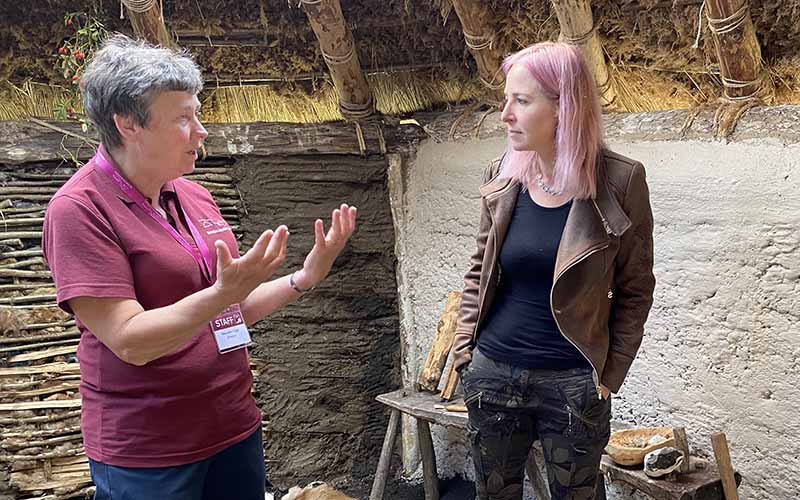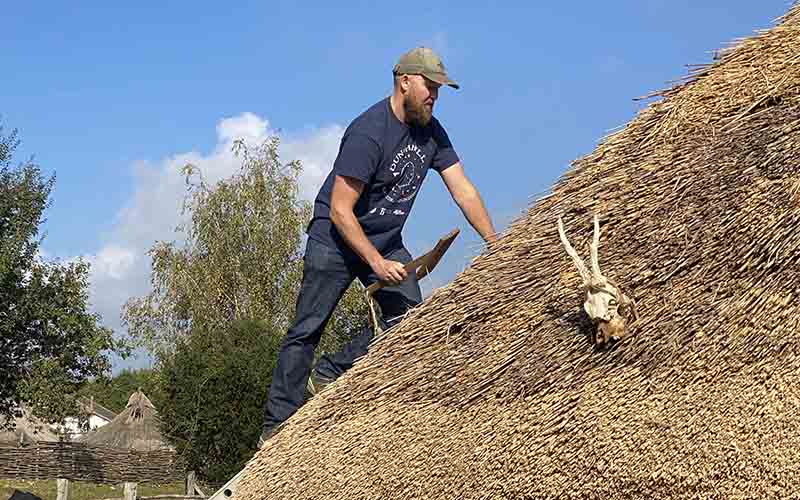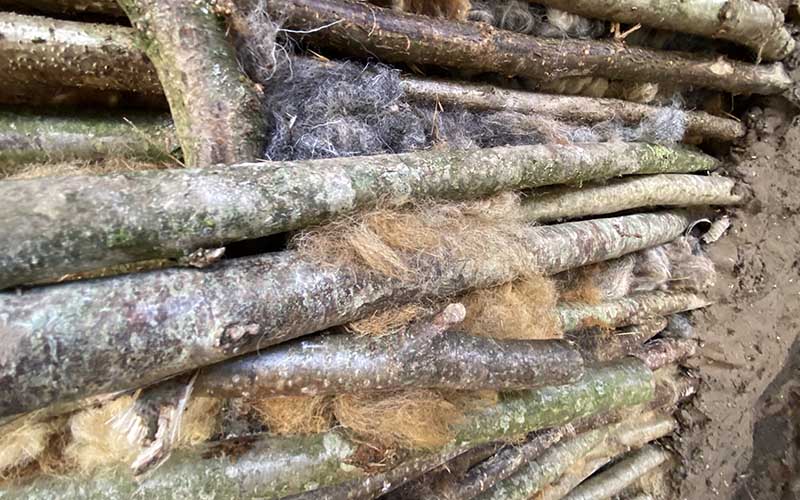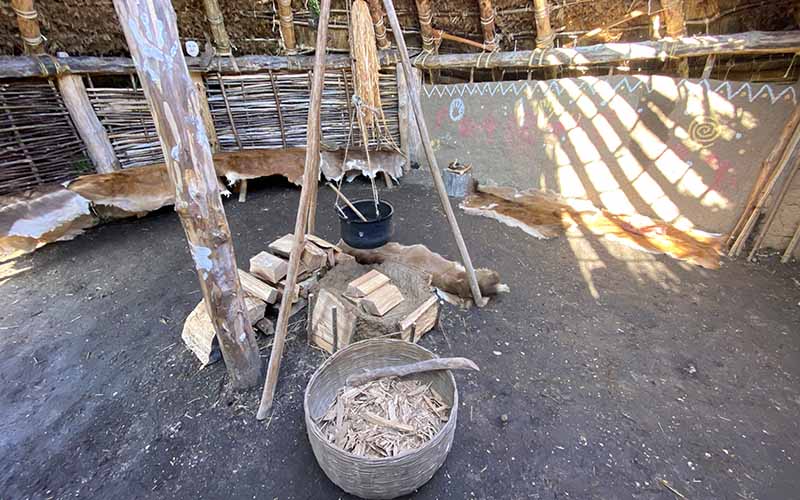Bronze Age Roundhouse
A unique reconstruction of a traditional Bronze Age Roundhouse, based on archaeological remains uncovered at Dunch Hill on Salisbury Plain, was officially unveiled on 9 October at experimental archaeology site, Butser Ancient Farm, by TV Presenter and archaeologist Professor Alice Roberts. The project is a collaboration between archaeologists from Butser Ancient Farm together with wounded, injured and sick military veterans, serving personnel and volunteers from Operation Nightingale working with the charity Step Together and Breaking Ground Heritage.

Operation Nightingale assists in the recovery of wounded, injured and sick military personnel and veterans by getting them involved in archaeology. They worked on this project as part of a collaboration with Butser Ancient Farm.
Military veteran and volunteer on the project, John William Bennett said: “To start with I was both excited and apprehensive about the project – apprehensive because I was fearful of how I would react to it, as socialising was a big trigger for my Functional Neurological Disorder affecting my mobility and motor control. However, I need not have worried, I haven’t been triggered and my confidence has really grown! Meeting and working with Time Team archaeologist Phil Harding on day one and then being interviewed on camera and still not having any symptoms was just incredible. Working through each stage of the project has been brilliant and I still find it hard to believe how much my life has turned around because of it. Not just feeling myself again, gaining more independence and confidence, the comradery but what else the project has led onto.”

Experimental archaeologist Trevor Creighton, from Butser Ancient Farm said: “This is a significant project for Butser Ancient Farm in a number of ways. Not only was this our first time working with volunteers from Operation Nightingale, but it is also our first ever Bronze Age building, so it gives us a great way to introduce school students and other visitors to this significant period in Britain’s past. It’s also an important experimental building because we are testing four different wall types around the circumference of our building. The archaeology from the original gave us only information about the postholes in which a strong timber frame stood 3,200 years ago, but nothing about the walls. That means the walls were made of materials that completely disappeared. We have therefore chosen to experiment with a number of possible versions of earth walling using topsoil, turves and chalk – exactly the sorts of building materials available to the original builders.

“My colleagues and the Operation Nightingale team have formed a brilliant collaborative network and we are creating a building that helps us better understand prehistoric architecture. In the coming years it will provide even more insights into structures that no-one has seen for three thousand years. But more than that, it is a way that we can give back something to people who have served their country in often harrowing situations.”
The reconstructed roundhouse is based on a Bronze Age building from around 1200 BC. 25 military veterans together with archaeologists from Butser Ancient Farm spent over 1000 hours working on the build which started in April. The project has allowed archaeologists to gain new insights into the way earth-walled roundhouses might have been built and it also allowed the military veterans to participate in a number of workshops, learning construction skills including thatching, woodworking and daubing as well as other essential ancient skills including pottery, spinning and cookery.
The cost of the materials used in the construction of the building was funded by a generous grant of £10,000 from the South Downs National Park Authority from their Covid-19 Recovery Fund, together with £35,000 which came from the Step Together charity via the Armed Forces Covenant Positive Pathways Fund. Step Together were also instrumental in finding volunteers to work on the Butser Ancient Farm/ Operation Nightingale project. Without this funding the project would not have been possible.

Elaine Corner, Volunteer Project Manager of Step Together, said: “I have really enjoyed being involved in this project. Recruiting the veterans and coordinating the sessions has been demanding but satisfying. The project has been so varied that no two days are the same and it has been fantastic to see new friendships forged, new skills learned, and confidences rebuilt. I have also learned some new skills which is an unexpected extra! It is so satisfying to see those needing support to become volunteers and move their lives forward by taking steps in the right direction for a successful future and knowing that I have been part of that.”
Anooshka Rawden, Cultural Heritage Lead for the South Downs National Park Authority, said: “This project has not only contributed to archaeological research and supported Butser Ancient Farm in telling a wider story with their unique and important site, but it’s shown that archaeology brings with it wider benefits – the opportunity to learn new skills, experience materials in new ways, and most importantly, see time depth, and the associations we can make with that experience around recovery, resilience and change.
“The people who have contributed to making this project happen have shown immense resilience, both as serving military personnel and in their own personal stories of recovery. The South Downs National Park Authority is extremely proud to have been able to contribute towards this project, and the new partnerships it has brought for Butser Ancient Farm, which is a site like no other in the National Park.”